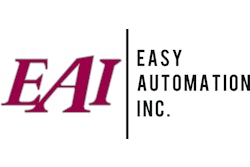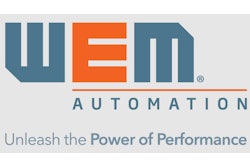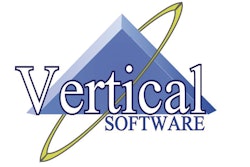
“Technology made large populations possible; large populations now make technology indispensable.” This quote from Joseph Krutch, a writer from the first half of the 1900s, sums up the way that technology integrates itself into all parts of human life and business.
In the past 20 years, the grain handling and processing industries have gone from predominantly turnkey operations to one that can formulate precise blends, keep track of every bushel and run with the press of a button on a smartphone. And because technology makes this possible, it puts anyone who does not use it at an extreme disadvantage — one that may eventually put them out of business.
Process control solutions and “lights-out” facilities get most of the attention, but often overlooked are management software solutions. Management solutions have been improving alongside other facility technologies, and with each innovation they save companies time, decrease mistakes and allows companies to focus on making their product.
Time is money
Perhaps the most valuable thing management solution technology offers the grain handling and processing industries are the time it frees up for employees. Every small efficacy given to the employee equals time that is used on other tasks around a facility. Pete Ensch, CEO of WEM Automation, explains how this works with WEM’s popular WEMView product.
“WEMView is a productivity tool designed to save employees time,” explains Ensch. “It runs on any Android device so an employee can pull up the facilities inventory, see what ingredients are in stock, how much they have and where it’s located with realtime data.
Without it, managers and employees have to search for materials on the shop floor or return to their office to check inventories several times a day.”
Eliminating the need for an employee to walk to and from an office may not seem like much time saved, but if an employee takes 10 minutes walking to and from their office to check inventory levels twice a day — that’s over 82 hours saved every year.
Unlike other upgrades a facility may consider, a product like WEMView is wholly digital and requires no downtime.
After installing the program is on the location’s server. Employees will be able to download an app on android devices and use the program throughout the facility.
Another example of time-saving software from WEM is it’s Key Performance Indicators (KPI) software.
“KPI is a management tool that provides a graphical image of an individual feed mill’s performance,” says Ensch. “We worked with feed professionals for years to create more than 30 performance indicators for all process areas, including receiving, grinding, batching, pelleting and loadout.”
Multifaceted tools like KPI can be used to understand opportunities for improving quality, productivity and efficiency. Instead of having various departments pull together and analyze reports — everything is collected in one digital place. An almost endless combination of data is available to see both trends and anomalies and from them identify opportunities for improvement or troubleshooting. Once the improvement is made, WEM’s KPI can be used to measure the resulting improvement.
“We worked with feed mill experts to discover what measurements are important to the industry. We used this information to create preconfigured reports and made them available through user-friendly pulldown menus. The reports are available and displayed in a graphical format that is exportable as an image, CSV or Excel file,” explains Ensch.
The best part of today’s digital offerings like WEM’s KPI is they can give facilities the tools they need to compete in the modern business world while requiring no downtime and often only taking a few hours to setup.
Communication is key
Analytics and inventory management are invaluable tools for any facility, but they are far from the only thing business management software can provide. Take the offerings from Vertical Software, Bartonville, IL.
The company offers products meant to save time on the back-office portion of grain and product delivery. A trio of windows-based software can automatically generate delivery tickets, simplify contract management and generate invoices and checks.
“We offer three different programs, GrainTrac, ScaleTrac and SpeEDI,” says Marcus Butterfield, programmer for Vertical Software. “Each is a windows program that works with the click of a mouse. Everything is as user-friendly as possible, so there are various drop-down selections, drill-down capabilities, electronic report storage and other ease-of-use factors.”
Butterfield continues, “The programs can be used separately, but offer more efficacy when used together.”
For example, Butterfield notes when a delivery driver pulls up to a facility, the ScaleTrac system generates a scale ticket, applies it to a disposition and prints the scale ticket with real-time contract balance, grade factors and gross and net bushels.
The SpeEDI system will import that transaction and apply it to the grower’s contract, spot or storage and automatically offset the in-transit shipment made and replace the origin weights with destination information. The information is then imported into the
GrainTrac software and allows the operator to easily settle grain, run end-of-day reports and issue a check for settled grain or process the payment through an Automatic Clearing House transaction.
Most business management software work as a single program. When an operation invests in programs that communicate with each other, it compounds the effects of any individual program.
Vertical Software’s programs save time for the back office, scale house and accounting employees, along with the time of a facility’s customers. But by having programs that can communicate, it also adds a layer of protection from accounting errors.
Reducing redundancies
The modern age has brought us technology that can make us more efficient, effective and resourceful, but it has also brought us more regulation, restriction and recordkeeping. Luckily business management software can help wrangle what was once a pile of paperwork into easily searchable files that live in one place.
Easy Automation’s Feed Office Enterprise was developed for the exact purpose of organizing the many different facets of feed manufacturing across multiple sites. The process not only saves man-hours from simplifying the way that employees find the information they need but also reduces confusion and productivity-killing redundancies in an employee’s workflow.
“Years ago, we discovered that accounting packages struggled to handle all the unique functions feed mills require,” explains Chris Gaalswyk, president of Easy Automation, Welcome, MN. “So, we decided to expand the functionality of our batching system to handle these functions. We integrate with many of the popular accounting platforms, allowing our customers to have a solution designed for their industry without having to pay for customization of their existing system.”
Integrating with other programs a customer is already using, allows Easy Automation to significantly reduce the number of spreadsheets and manual entry’s used to operate with unlinked systems. By eliminating these tasks and redundancies, not only does the software save man-hours during the day to day operations of a facility, it reduces the time spent to fix the issues that occur with mistakes made with manual entries. The system will also help companies, both big and small, manage the recordkeeping responsibility of today’s feed industry.
“Feed Office Enterprise provides endless efficiencies for its users,” explains Gaalswyk. “The primary efficiency it gives is the simple reduction of paper records and receipts. Electronic documents replace paperwork for auditing, shipping, recordkeeping, Food Safety Modernization Act compliance, and many other internal applications.”
Information at will
For grain elevators, the task of selling grain is an endless struggle to improve margins for both the elevator and the growers it relies on for product. Grain merchandising is so vital to the survival of an elevator, that any small increase in efficacy can be the difference between being successful and going out of business. AgVision, Ankeny, IA, provides business management software designed to help grain merchandisers operate with the latest information possible, freeing them up to make the best moves for their facility.
“The programs we offer can be used separately but work best when used in conjunction,” explains Ben Fuller, sales manager for AgVision. “Our Commodity Manager and Scale Interface offerings speed up and help automate the receiving and shipping of grain and creates and collects all the data needed for accounting and reporting. The scale tickets these programs generate are then sent electronically to growers, buyers and regulators.” Recorded data is then available in the Commodity Manager software. It makes it easy to retrieve data as needed for merchandisers to sell commodities on the market with confidence.
“The Commodity Manager software was built ground up for the industry and works independent of the financial accounting system,” says Fuller. “The operations we work with have said that our software is easy.
“Merchandisers are especially complimentary on how the software can track basis, nearby basis, long and short position and the cash price of the grain they own.”
Always evolving
AgVision, and all the companies featured, continuously adapt and update products based on user feedback.
“We continue to grow and enhance our technology, software and services,” says Fuller. “We listen, learn, adapt and develop solutions that our customers want.”
As the grain processing and feed industries become more complex and so does their business technical needs. Companies that embrace technological changes and adapt them to their workflow, will continue to hold an advantage over their competitors in a market that requires every advantage to be successful. ■
.jpg?auto=format%2Ccompress&crop=faces&fit=crop&h=48&q=70&w=48)


















